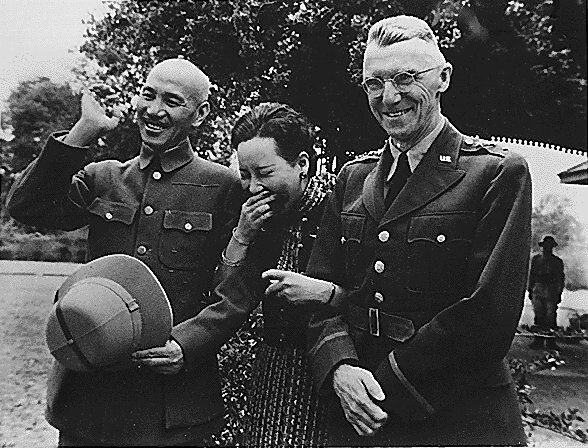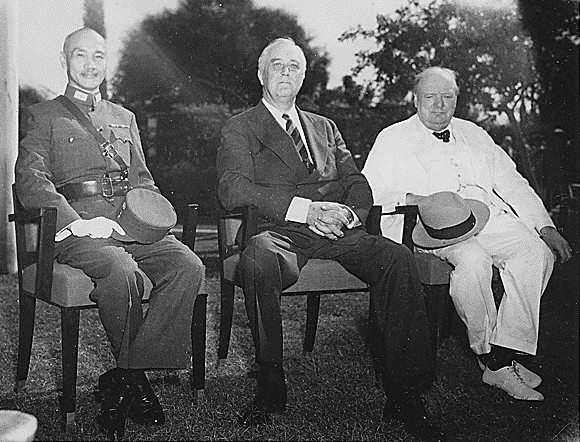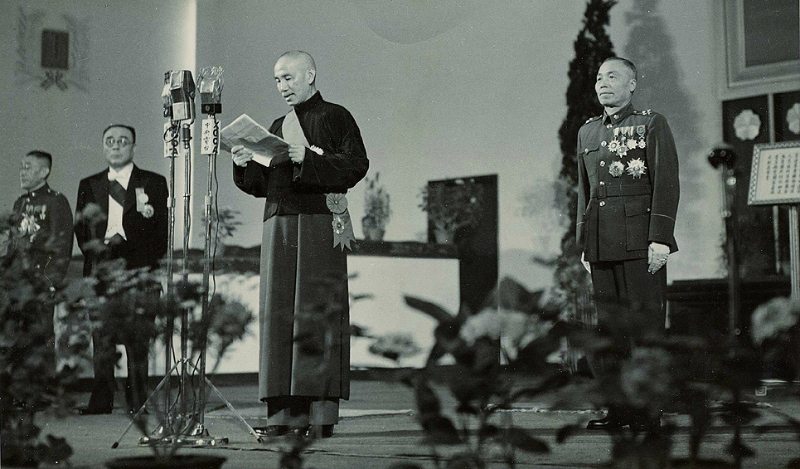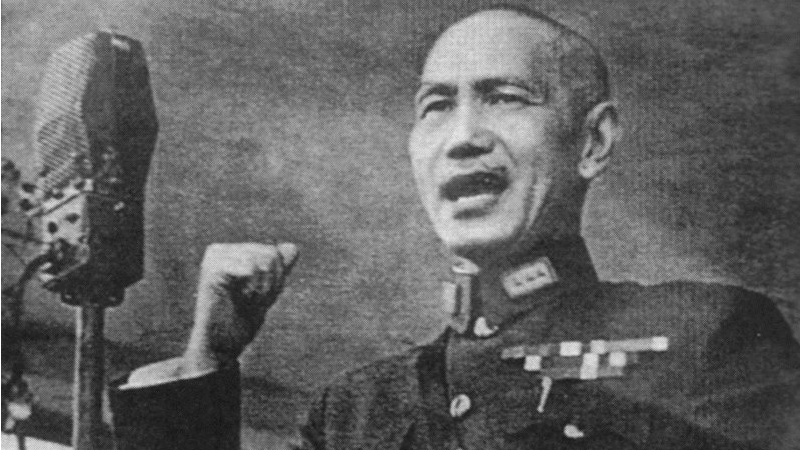Chiang Kai-Shek
Episode #4 of the course Deadliest dictators in history
A renowned Chinese military leader and one of the most controversial names in history, Chiang Kai-Shek (1887–1975) was the president of the Republic of China as leader of the Nationalist party for nearly 40 years. He led China through World War II, when the country was a member of the Allied forces against Japan. He and his wife attended the Cairo conferences that established the United Nations, where she became an international celebrity and pop culture icon known as “Madame Chiang.” After a military coup, Chiang was overthrown and exiled to Taiwan.

Chiang Kai Shek and wife with Lieutenant General Stilwell
Credit: https://catalog.archives.gov/id/531135
Born to a wealthy merchant father and his “second wife” (perhaps his concubine), Chiang’s life growing up was difficult. He entered a military academy, training for two years in Japan and serving in military and governmental positions.
In 1924, Chiang established and began operating a military academy. Using techniques he picked up during his studies in Russia, Chiang strengthened China’s military power.
When Chiang stepped up to power as the president in 1925, the country of China was still fairly new. Before the 1911 revolution, China had been an empire with several smaller kingdoms, a number of brutal warlords, and no sense of national identity. In the 1920s, Chiang was part of the driving force to help China establish a new Nationalist identity but was besieged. Warlords continued to ravage northern China, although Chiang’s forces did institute some changes. Most significantly, Chiang was not able to maintain good relations with the Chinese Communist party, resulting in the Chinese Civil War.
In 1927, a massacre occurred in Shanghai; Chiang’s Nationalist forces executed around 500 Communists, and another 3000 or so ended up missing after the incident. This sparked a series of additional conflicts and confrontations and caused an irreconcilable rift between the two parties.
Japan captured Manchuria in 1931, but Chiang continued to focus on Communism as a threat to China rather than Japan. In 1936, one of the Communist generals captured Chiang and held him hostage for two weeks until Chiang agreed to send Nationalist forces to fight alongside the Communists in the battles against Japan.

Chiang Kai-shek, Franklin D. Roosevelt, and Winston Churchill met at the Cairo Conference in 1943 during World War II.
Credit: https://catalog.archives.gov/id/196609
In 1949, the Communists defeated the Nationalists, and Chiang and his cabinet fled to Taiwan, where he remained the official president of the Republic of China. Although he plotted to retake mainland China, he never did.

Republican Year 37-1948, Chiang Kai-shek’s inauguration speech as the first President of the Republic of China in the new constitution of 1948
On his arrival to Taiwan, he instituted martial law and persecuted people critical of his rule. The period known as “White Terror” lasted 40 years (from 1947 to 1987) and was an oppressive time for the people of Taiwan. Over 140,000 people were imprisoned and thousands executed for being critical of Chiang or his government.
A complex character, Chiang Kai-Shek converted to Protestantism and was a strict, virtuous man. He did not drink, gamble, or smoke. He made time for daily Bible readings. He believed in the Confucian saying that if a leader is virtuous, the people would also be virtuous, living his life as an example of the “straight and narrow” moral path. Chiang Kai-Shek is responsible for the ending of an estimated 38 million lives.
Recommended books
“The Generalissimo: Chiang Kai-shek and the Struggle for Modern China” by Jay Taylor
“The Last Empress: Madame Chiang Kai-shek and the Birth of Modern China” by Hannah Pakula
Share with friends

